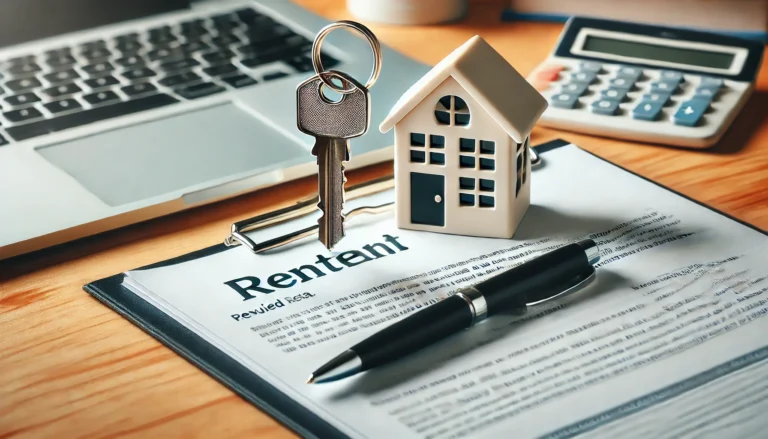Cost of Living in Major U.S. Cities
A Guide to the Cost of Living in Major U.S. Cities
Understanding the cost of living in major U.S. cities is crucial for anyone considering relocation, job opportunities, or simply budgeting for travel. This comprehensive guide delves into the various components that contribute to living expenses, including housing, utilities, transportation, food, healthcare, and entertainment. By comparing costs across different cities, you can make informed decisions that align with your financial goals.
Overview of Cost of Living
The cost of living encompasses the total expenses required to maintain a certain standard of living. These costs can vary significantly from one city to another. Factors such as local economy, housing market, and lifestyle choices play a significant role in determining living expenses.
Key Factors Affecting Cost of Living
- Location: Geographic area directly impacts housing prices and other living expenses.
- Economic Conditions: Job market and local economy influence salary levels and overall affordability.
- Demand for Housing: Cities with high demand often have higher rental and purchase prices.
- State and Local Taxes: Taxes can vary greatly between states, affecting net income and disposable income.
Housing Costs in Major U.S. Cities
Housing is typically the largest expense for individuals and families. Below is a breakdown of housing costs in several major cities.
1. New York City, NY
- Average Rent (1-bedroom apartment): $3,000 – $4,500
- Median Home Price: Approximately $1.1 million
- Overview: Housing prices in New York City remain among the highest in the nation, driven by demand and limited space.
2. San Francisco, CA
- Average Rent (1-bedroom apartment): $3,500 – $4,800
- Median Home Price: Approximately $1.6 million
- Overview: The tech boom has pushed housing prices sky-high, making San Francisco one of the most expensive cities in the U.S.
3. Los Angeles, CA
- Average Rent (1-bedroom apartment): $2,500 – $3,500
- Median Home Price: Approximately $800,000
- Overview: While still expensive, housing costs in Los Angeles can be more affordable compared to San Francisco and New York City.
4. Chicago, IL
- Average Rent (1-bedroom apartment): $2,000 – $2,800
- Median Home Price: Approximately $300,000
- Overview: Chicago offers a more affordable housing market compared to coastal cities, with diverse neighborhoods to choose from.
5. Austin, TX
- Average Rent (1-bedroom apartment): $1,800 – $2,500
- Median Home Price: Approximately $500,000
- Overview: Austin’s booming tech industry is driving up housing costs, but it still offers a relatively affordable alternative to cities like San Francisco.
6. Seattle, WA
- Average Rent (1-bedroom apartment): $2,500 – $3,200
- Median Home Price: Approximately $800,000
- Overview: Similar to San Francisco, Seattle’s tech sector has contributed to rising housing prices.
Utility Costs
Utility costs can vary based on location, usage, and the time of year. Below is a comparison of average monthly utility costs in major U.S. cities.
| City | Average Monthly Utility Cost |
|---|---|
| New York City | $150 – $250 |
| San Francisco | $150 – $300 |
| Los Angeles | $100 – $200 |
| Chicago | $150 – $250 |
| Austin | $150 – $200 |
| Seattle | $150 – $250 |
Components of Utility Costs
- Electricity and Gas: Typically higher in colder climates during winter.
- Water and Sewer: Charges can vary based on local regulations.
- Internet: Average monthly costs range from $50 to $100, depending on the service provider and speed.
Transportation Costs
Transportation costs include public transit fares, gasoline prices, and vehicle maintenance. Below is an overview of average transportation expenses in major cities.
Public Transportation
- New York City: Monthly subway pass costs around $127.
- San Francisco: Monthly MUNI pass is about $86.
- Los Angeles: Metro pass costs approximately $100 per month.
- Chicago: Monthly CTA pass is about $105.
- Austin: Monthly CapMetro pass costs around $38.
- Seattle: Monthly ORCA pass is approximately $99.
Gasoline Prices
Gasoline prices fluctuate but can be higher in urban areas. Here’s a general overview:
- New York City: Approximately $4.00 per gallon
- San Francisco: Approximately $4.50 per gallon
- Los Angeles: Approximately $4.20 per gallon
- Chicago: Approximately $3.80 per gallon
- Austin: Approximately $3.30 per gallon
- Seattle: Approximately $4.00 per gallon
Food Costs
Food costs vary based on personal preferences, dining habits, and local prices. Here’s a comparison of average grocery and dining costs in major U.S. cities.
Grocery Prices
| City | Average Monthly Grocery Cost |
|---|---|
| New York City | $400 – $600 |
| San Francisco | $450 – $650 |
| Los Angeles | $300 – $500 |
| Chicago | $300 – $450 |
| Austin | $250 – $400 |
| Seattle | $350 – $550 |
Dining Out
Dining out can also significantly impact your budget. Here’s a comparison of average meal prices:
- Fast Food Meal: $8 – $12
- Mid-range Restaurant (3-course meal for two): $60 – $120
Healthcare Costs
Healthcare costs can vary widely depending on insurance coverage and local healthcare prices. The following is an overview of average healthcare costs in major cities.
Average Healthcare Costs
- New York City: $500 – $1,000 per month (for families)
- San Francisco: $400 – $800 per month (for families)
- Los Angeles: $350 – $700 per month (for families)
- Chicago: $300 – $600 per month (for families)
- Austin: $250 – $500 per month (for families)
- Seattle: $400 – $800 per month (for families)
Entertainment and Leisure Costs
Entertainment and leisure activities also contribute to the overall cost of living. Below is a summary of average costs for entertainment in major cities.
Average Entertainment Costs
- Movie Ticket: $12 – $20
- Fitness Club Membership: $30 – $100 per month
- Concert Ticket: $50 – $200 (depending on the artist and venue)
Taxes
Taxes can significantly impact your disposable income. Different states impose various income tax rates, sales tax, and property tax rates.
State Tax Overview
- New York: State income tax ranges from 4% to 10.9% (depending on income).
- California: State income tax ranges from 1% to 13.3%.
- Texas: No state income tax.
- Illinois: Flat state income tax rate of 4.95%.
- Florida: No state income tax.
- Washington: No state income tax, but high sales tax (around 10%).
Cost of Living Index Comparison
To better understand how the cost of living varies between cities, the following table compares the cost of living index for select cities.
| City | Cost of Living Index (U.S. Average = 100) |
|---|---|
| New York City | 187.2 |
| San Francisco | 188.2 |
| Los Angeles | 143.9 |
| Chicago | 98.3 |
| Austin | 117.7 |
| Seattle | 146.2 |
Conclusion
Navigating the cost of living in major U.S. cities is essential for making informed decisions about relocation, budgeting, and lifestyle choices. From housing and utilities to transportation and healthcare, understanding these expenses can help you achieve your financial goals.
When considering a move, always factor in not just the salaries and wages but also how far your money will stretch in a new city. This guide serves as a valuable resource for assessing the financial landscape of various urban areas across the United States.
For more detailed information and real-time updates, check resources such as Numbeo, MIT Living Wage Calculator, and Zillow for housing insights.




